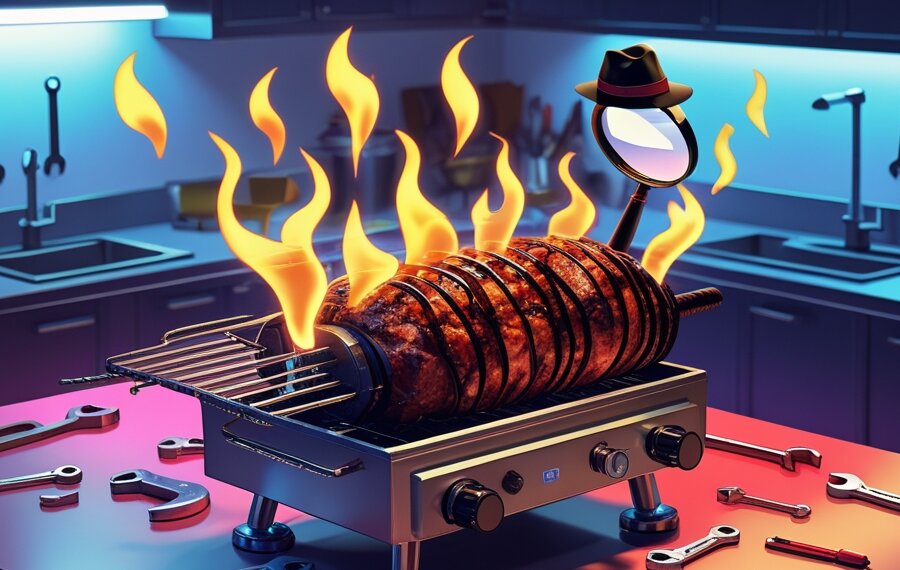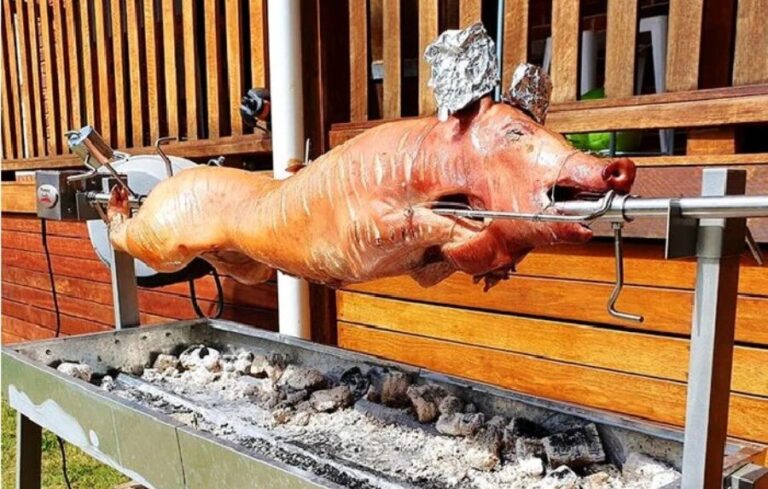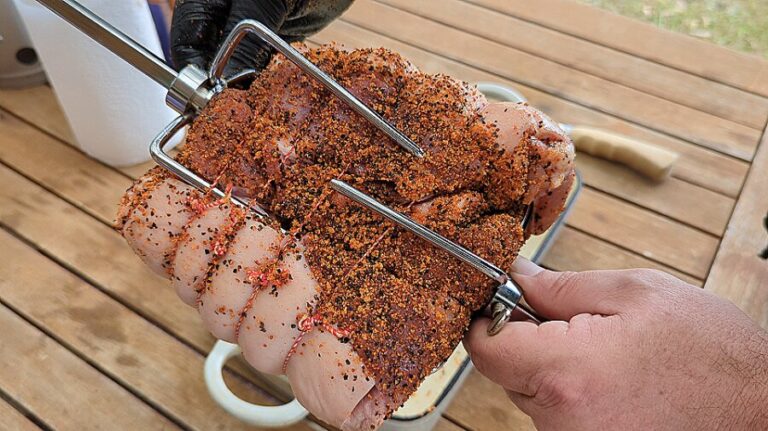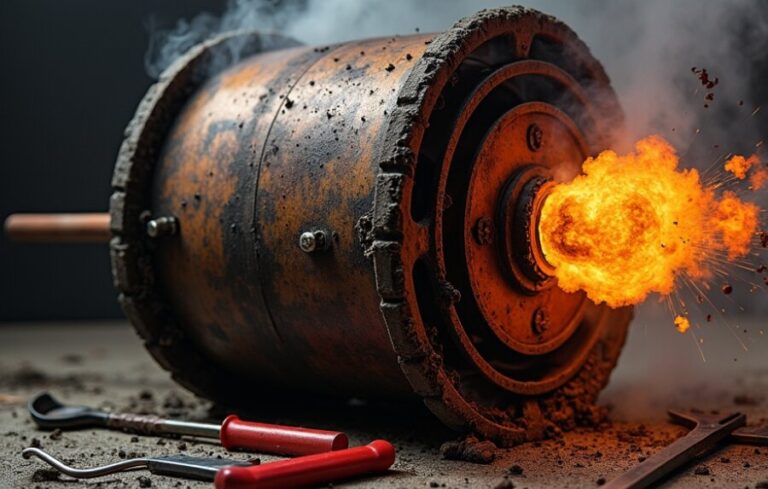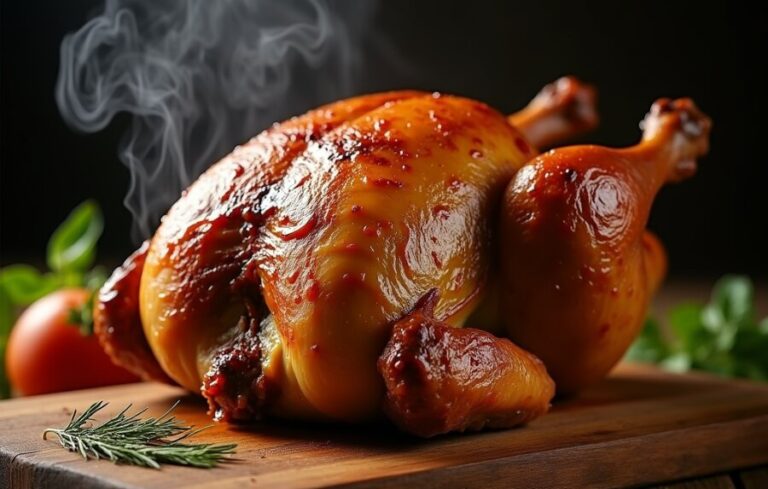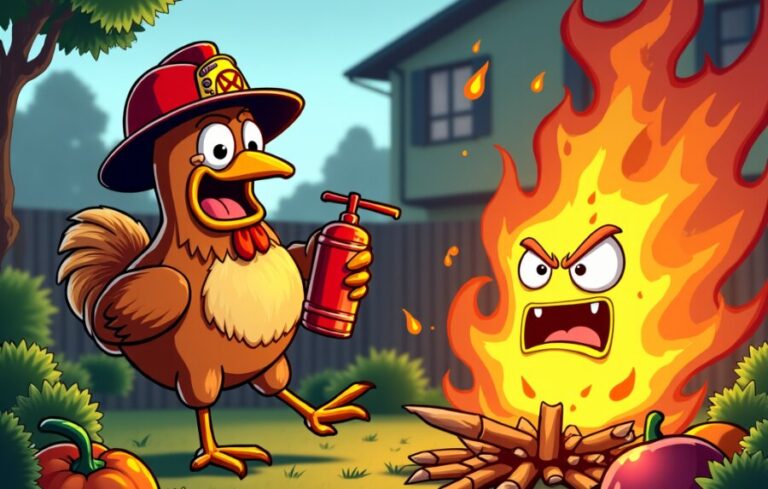Our evaluations and product assessments are conducted using a thorough and unbiased approach. Should you choose to buy any items through our provided links, we might receive a commission Read our disclosures.
Troubleshooting Rotisserie Burner Problems: Fix Your Rotisserie Burner Woes
When I’m getting ready to grill, I want everything to go off without a hitch. But sometimes, my rotisserie burner has other plans. Let’s cut through the smoke and get to troubleshooting rotisserie burner problems and these common issues.
Getting the Burner Going
Starting that rotisserie burner right is key for a tasty BBQ night. With my Summit gas grill’s infrared (IR) setup, I have to hold the control knob in for around 20 seconds after hitting the igniter. This gets the burner primed and ready to go.
That snap igniter does its magic by allowing gas to flow and creating a dance of flames across the burner surface before it fully engages. Once that ceramic surface glows red-hot, I’m in business! For more tips on preventing flare-ups, I check out this guide.
For detailed troubleshooting of rotisserie burner problems, ensure you regularly maintain the burner and check for any debris that may obstruct its operation.
What Could Go Wrong?
| Problem | Cause | Quick Fix |
|---|---|---|
| Won’t ignite | Blocked burner ports | Clear the blockages and try again |
| Uneven heating | Misalignment | Readjust the burner |
| Flames that don’t stay lit | Low gas pressure or a block | Check the propane tank and connections |
Lots of grill problems—about 15%—trick back to rotisserie burners. So, when things don’t seem right, I investigate this part, especially on Lynx Grills. They’re known for uneven heat or ignition issues (Palm Beach Grill Center).
Keeping Those Flames Steady
Once my rotisserie’s kicking, I want it working perfectly. Common hiccups include uneven heat and flickering flames (Barbecue Parts Depot).
Tips for Flame Management
- Clear out debris and grease from burner ports. Keeps that flame game strong.
- Align the burner properly for even cooking.
- Make sure the rotisserie motor and spit are doing their job right.
By regularly maintaining my rotisserie burner, I get better performance and a longer lifespan. If my rotisserie meat starts drying out, I check out solutions like this one to tweak my cooking techniques.
By staying on top of these issues, I can enjoy perfectly grilled, mouth-watering meals every time.
Common Grill Noise Problems
Cooking on a rotisserie can be peaceful, but sometimes, your gas grill sounds like it’s having a party of its own. Understanding these noises can help you figure out what’s going on. Let’s break down some usual grill sounds and how to handle them without sounding like a technician.
Gas Grill Noises Overview
Grill noises tell you what’s wrong beneath the hood. Here’s a quick glance at some common noises and their fixes:
| Noise Type | What’s Happening | Quick Fix |
|---|---|---|
| Popping | Burner mess or bad fuel flow | Check burners (My Grill Parts) |
| Humming | Regulator’s a bit fussy | Reset LP regulator (My Grill Parts) |
| Hissing | Gas leak – yikes! | Check for leaks pronto (My Grill Parts) |
| Clicking | Igniter throwing a tantrum | Clean and realign ignition (JustAnswer) |
Popping Sounds from Burners
Popping sounds from those burners can be freaky, but don’t sweat it. It usually means:
- Fuel flow issues: Make sure your connections are tight, and there’s enough propane in the tank.
- Dirty burners: Grease and junk build-up can mess with the flames. Cleanings a must.
Regular tune-ups and cleaning of your grill burners will keep those pops to a minimum and ensure smooth grilling.
Regulator Noises
The regulator manages the gas flow to your burners, and it can make its own sounds:
- Humming: A simple reset of the LP regulator usually fixes it. If it keeps humming, dig a little deeper.
- Hissing: If you hear a hissing sound, especially from the propane tank, it spells gas leak. Check the tank right away, following the steps from My Grill Parts.
Whenever your grill makes a fuss, it’s hinting at something. Address these common noises to keep your rotisserie running like a charm. If you’re struggling with flare-ups or uneven browning, check out our guides on troubleshooting rotisserie flare-ups and fixing rotisserie uneven browning.

Taking Care of Your Infrared Burners
If you’re big into outdoor cooking like me, especially with a rotisserie, you’ve probably realized keeping those infrared burners in top shape is key. These burners are a bit special, so let’s make sure we keep them running smooth.
What Makes Infrared Burners Special?
Infrared burners aren’t your regular grill. Imagine big, rectangular boxes with ceramic tiles inside. These tiles have tiny ports that let gas out, igniting into super hot flames. This heat is perfect for locking in all that juicy goodness in meats.
Here’s the lowdown on what makes these burners tick:
| Feature | What it Means |
|---|---|
| Ceramic Tiles | Where the magic happens with tiny gas ports. |
| Fast Heating | Ready to cook almost in no time. |
| High Heat | Great for that seared crust on your steak. |
| Versatile Cooking | Handles both direct and indirect methods like a champ. |
Keeping Your Burners Clean and Happy
Regular upkeep of your infrared burners can dodge a lot of hassles. Here are some no-nonsense tips:
Keep ‘Em Dry: Infrared burners hate water. If they get wet, they might start making weird popping sounds or just flat-out refuse to work. If they do get wet, let them dry completely before firing them up again. Water damage is usually a no-go for warranties (MHP Grills).
Drip Pan, Always: Use a drip pan when you’re cooking indirectly. This stops grease and juices from dripping onto an off burner, which can crack it when you light it up later (MHP Grills). This step keeps your burner safe and working longer.
Clear Out Clogs: Hearing pops from your burner? It might be clogged. Take it out and clean the orifice and tubes, then use a wooden toothpick to clear any blockages. This can prevent those popping sounds and keep flames steady (MHP Grills).
Spot the Cracks: Regularly check for cracks or chips in the ceramic tiles. If they’re damaged, your burner won’t work right and will need replacing to keep cooking trouble-free (MHP Grills).
By sticking to these tips, you’ll keep those infrared burners in peak condition. And if things go sideways, check out our guides on rotisserie flare-ups and fixing a rotisserie motor that’s not turning. Happy grilling!
Issues with Lynx Grill Rotisserie Burners
As someone who loves to grill in the great outdoors, keeping my Lynx grill rotisserie in top shape is a must. When problems crop up with the rotisserie burner, I need them sorted, pronto.
Troubleshooting Burner Problems
Lynx grill rotisserie burners can act up and mess with your grilling mojo. Around 15% of grill issues come down to these burners, so it’s vital to troubleshoot effectively.
Here’s what to look out for:
- Hot and Cold Spots: You might find that some parts of your meat are cooking way faster than others, leaving you with a mix of overcooked and undercooked bites.
- No Spark: The burner doesn’t light up at all, threatening to derail your entire grilling session.
These gremlins often come from clogs in the burner ports or bad alignment. Always check for gunk or grease that might block the gas flow.
Keeping Things Running Smoothly
Regular upkeep is the trick to keeping your Lynx grill rotisserie burner firing on all cylinders. Here’s my go-to checklist:
- Clear the Clogs: Frequently check the ports and clear out any gunk or grease buildup that could mess with performance.
- Get it Straight: Make sure the burner is properly aligned. This helps avoid uneven cooking and ignition problems.
- Motor and Spit Check: Always verify that the rotisserie motor and spit are working right. If they’re off, you could face bigger headaches like dried-out rotisserie meat or uneven browning.
Following these steps will not only make your grilling better but also help your equipment last longer. If you run into more grilling issues, don’t sweat it. Check out other tips like troubleshooting rotisserie flare-ups or dealing with a stuck rotisserie motor. Happy grilling!
Grill Longevity and Performance
Keep That Grill Shining
Keeping a grill clean isn’t just for looks; it’s like the secret sauce to making sure your rotisserie goes the distance. When I clean my grill after every use, it’s not just about wiping away the grime—it’s my way of giving it some love. And I’ve noticed, grills that get this TLC last almost twice as long as those that don’t. Here’s the payoff from regular cleaning:
| Benefit | Effectiveness |
|---|---|
| Longer lifespan | 40% more time in action |
| Prevents clogs | Keeps burners happy |
| Early issue detection | Saves big bucks on repairs |
Every month, I take a closer look, hunting down rust spots or any wear and tear. Catching these issues early has saved me from expensive repairs about 30% of the time, according to Palm Beach Grill Center. If you love using the rotisserie like I do, keeping up with these little chores keeps the grills turning perfectly.
Why Bring in the Pros?
I can’t stress enough how awesome it is to have your grill looked at by a professional at least once a year. I do my best with regular cleaning, but having someone who knows their stuff dig into the tricky parts—like checking gas lines and the igniter—adds an extra layer of security. Pros can spot those sneaky problems I might miss, making sure my Lynx Grill keeps cooking smoothly.
Letting an expert go under the hood means they can perform some essential maintenance to keep things running tip-top. This thorough check-up ensures that my rotisserie stays efficient, flipping out perfect meals every time. For anyone really into grilling, mixing personal upkeep with professional check-ins is a killer combo.
Handy Tips for the Grill Master
Understanding how to care for your grill can make a world of difference. Regularly checking the rotisserie burner for debris and positioning it right can seriously boost your cooking game. If you’ve got issues like uneven browning or that stubborn motor not turning, having a mix of at-home maintenance and professional help can solve most of these headaches. The key is consistency; a little effort goes a long way to ensure every grilling session is a hit.
Tired of That Annoying Clicking Sound from Your Grill?
There’s nothing more annoying than hearing that constant clicking noise when you’re just trying to kick back and enjoy a cookout. Fear not! Let’s fix this once and for all.
Clean Up the Mess
First thing’s first, that clicking might be due to food bits stuck around your grill’s ignition system. It’s a hassle, but it’s an easy fix. Grab an old toothbrush and get cleaning around the burner, under the knobs, and near the igniter.
Here’s your cleaning checklist:
| Step | Task |
|---|---|
| 1 | Switch off the gas and make sure the grill is cool. |
| 2 | Sweep away any food crumbs around the igniter. |
| 3 | Scrub gently with the toothbrush around the burner and igniter. |
| 4 | If there’s any moisture, let it dry out. |
Even moisture can mess with the igniters. So, taking off the knobs and burner caps and letting everything dry for a bit could be your solution (JustAnswer).
Realign the Burner Caps
Is your stove still acting up even after cleaning? Your burner caps might be misaligned. This can mess up the igniters. Quick fix: make sure the stove is cool, then remove the burner grate, realign the burner cap, and you’re good to go.
Here’s how:
| Step | Task |
|---|---|
| 1 | Make sure the grill is cool. |
| 2 | Carefully remove the burner grate. |
| 3 | Check the burner cap’s alignment. |
| 4 | Adjust it so it fits snugly. |
Still hearing that click-click-click? You might be dealing with faulty parts like the spark module or ignition switch. If that’s the case, you might need to replace some bits and pieces (JustAnswer).
Enjoy Click-Free Grilling
Follow these steps and your grill should be free from that annoying clicking sound, giving you more time to enjoy delicious BBQ without the noise. For more how-tos, check out our guides on troubleshooting rotisserie flare-ups and avoiding dry rotisserie meat.


